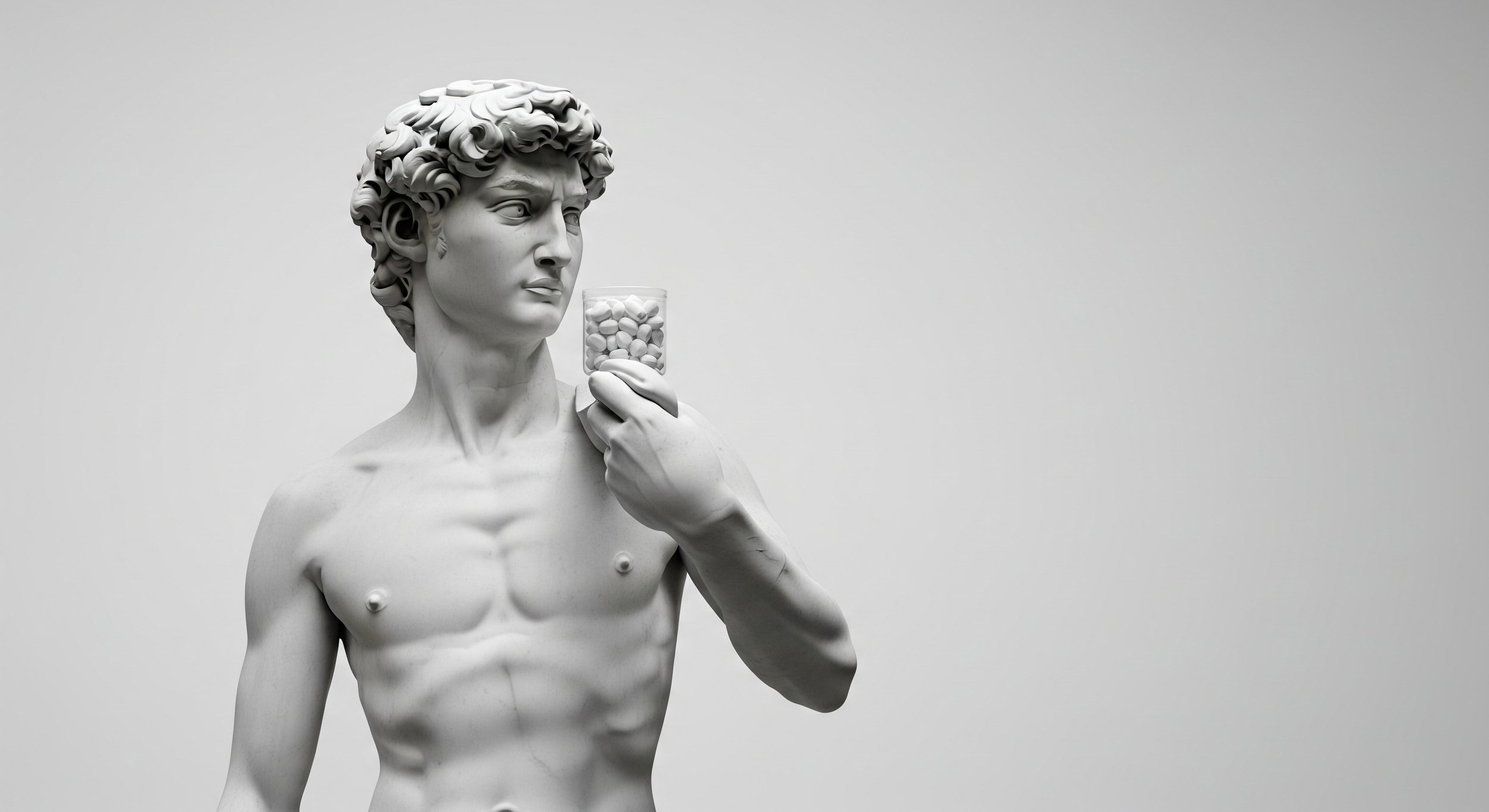Can a ‘Muscle-Building’ Antibody Transform Weight Loss? The Promise, and Limits, of Bimagrumab in the Age of GLP-1s
The Double-Edged Sword of Weight Loss Drugs
There’s a modern pharmacological revolution underway in obesity and diabetes care. Blockbuster GLP-1 receptor agonists (like Wegovy and Mounjaro) are rewriting the playbook, helping people lose far more weight than ever seemed possible with medication. But there’s a catch, a third or more of that weight loss isn’t just fat, but also muscle. Lose enough muscle and metabolic efficiency, and you might end up leaner yet physically weaker, a trade-off no one, especially athletes or those concerned with long-term health, wants.
Physicians, like myself, worry a lot about this. Muscle is more than just strength and aesthetics, it’s foundational to immune function, glucose control, physical resilience, and lifelong functionality. The elusive goal of fat loss alongside muscle gain would be a significant achievement for those that need it most.
Meet Bimagrumab: The Anabolic Antibody
Enter bimagrumab, an engineered antibody built for a specific purpose: to remove the natural “brakes” that limit muscle growth. Bimagrumab blocks activin type II receptors (ActRIIA/IIB), which receive anti-growth signals from a protein called myostatin. With those receptors blocked by the drug, muscle cells are “allowed” to grow bigger and stronger.
This is not theoretical, a number of clinical trials in people with obesity, type 2 diabetes, and even elderly individuals with muscle wasting (sarcopenia) have shown that bimagrumab, given by intravenous infusion, can trigger significant fat loss and muscle gain, simultaneously. In one standout study, adults receiving bimagrumab lost over 20% of their body fat but actually gained lean muscle, as measured by precise body scans. Even blood sugar improved. However, the biggest muscle gains did not always translate directly to greater strength or function, especially in older adults. And these trials all tested bimagrumab alone, not in combination with modern weight-loss drugs.
The Dream Duo: Bimagrumab Plus GLP-1 Agonists?
The focus in obesity and muscle medicine is now very much on synergy. Imagine combining bimagrumab (to “build” muscle) with a GLP-1RA (to “lose” fat). It makes sense, GLP-1 drugs drive appetite suppression and caloric deficit but can cost you muscle; bimagrumab could, at least in theory, block this penalty and help people maintain or increase muscle even as they lose significant weight.
And it’s not just theory. Mouse studies combining an ActRII blocker with a GLP-1 agonist show preservation of muscle alongside remarkable fat loss. Many experts see this as the holy grail of body recomposition therapeutics.
However, no published human clinical trial has yet tested this combination. All existing bimagrumab trials have used it as a single agent. Until rigorously designed studies demonstrate real-world benefit and safety in people, any “miracle” stories about combination treatments are premature.
Why Lifestyle Still Rules:
All this science is exciting. But the real magic, muscle growth, functional resilience, sustainable fat loss, still happens in daily life, not in the pharmacy. Every credible clinical trial of bimagrumab or GLP-1 drugs has included pillars like nutritional counseling and prescribed exercise routines. The people who do best are those who moved their bodies, lifted weights, ate well, and remained engaged with behavioral support throughout.
Why this matters for anyone using GLP-1 drugs:
The appetite suppression is profound, sometimes so much so that people simply don’t eat enough, risking even more muscle loss unless they deliberately focus on resistance training and adequate protein. A lighter body without sufficient muscle can mean decreased metabolic rate and greater fragility.
From a human performance perspective, pharmaceuticals can help, but sustainable transformation comes from behaviors:
Strength and resistance training to signal your body to keep (and build) muscle
Sufficient nutrition, especially protein, to fuel recovery
Sleep, stress management, and psychological support to maintain healthy patterns after medication ends
Medications like bimagrumab or GLP-1RAs may help tip the scales, but the real, lasting gains are made in the gym, the kitchen, and the mind.
How Close Are We to this Holy Grail?
In the real world, we’re not there yet. The science is ahead of the approval pipeline, and however promising animal and monotherapy results are, no one yet knows if bimagrumab plus a GLP-1RA will deliver on the full promise in people, nor what the risks or unexpected interactions might be. While the safety record for bimagrumab monotherapy is reassuring, combination data must be scrutinised.
The next wave of studies, already underway, will need to prove, with gold-standard body scans and direct strength testing, that this approach is safe, effective, and, most importantly, translates into meaningful improvements, not just on paper, but in real-world benefits.
The Final Word: Innovation, But Not Instant Solutions
While new drugs like bimagrumab are poised to transform the landscape, they are adjuncts, not substitutes, for the fundamental practices of lifelong health. No medicine replaces the power of active living, healthy eating, and psychological resilience. The best path is a blended one, judicious use of modern therapies as part of a holistic program aimed at functional performance and authentic, lasting change.
So, watch this space, bimagrumab and GLP-1s may yet become the power duo everyone hopes for. But for now, the strongest foundation for a better body remains what you build, one day at a time.
By Dr Andrew Crockett

